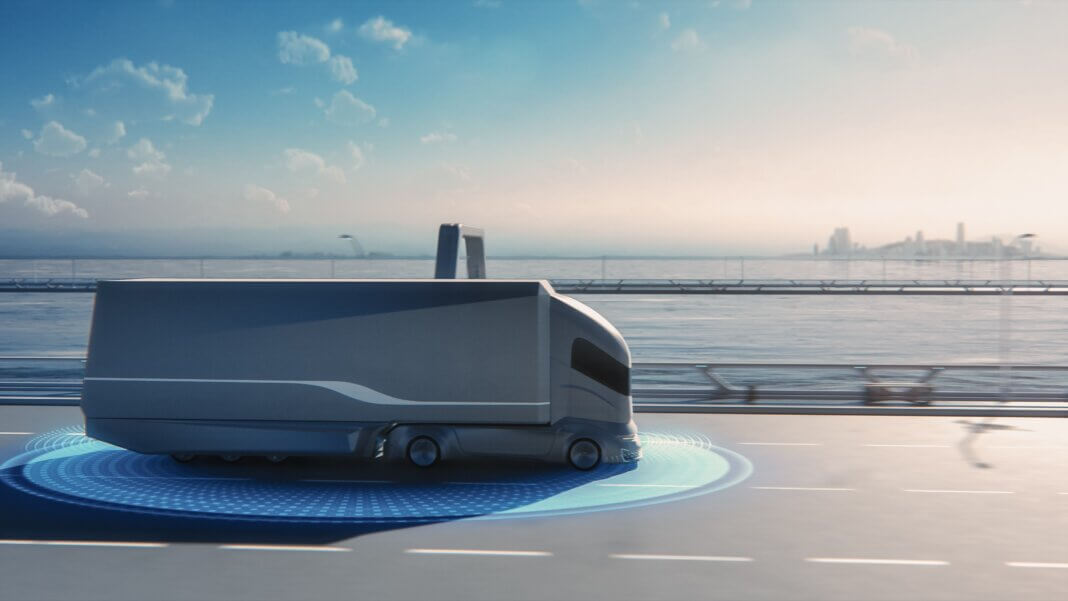Sustainability Impacts of Autonomous Vehicles in the Supply Chain
As the logistics industry races toward efficiency and sustainability, autonomous vehicles (AVs) are emerging as a promising solution.
While the journey to full deployment is ongoing, autonomous trucks are becoming more viable each year. Projections suggest widespread adoption by the 2030s, so it’s essential to consider how this technology will shape a more sustainable future for supply chains.
The Road to Autonomous Adoption
Automation is classified into five levels in the world of autonomous vehicles, each with a different degree of driving independence.
> Level 1: The vehicle has basic driver assistance — like steering or braking support — but the driver remains fully in control.
> Level 2: Offers partial automation — such as automated steering and acceleration — yet still requires a human driver’s oversight.
> Level 3: Introduces conditional automation, where the vehicle can handle driving tasks in specific situations but may need the driver to take over when alerted.
> Level 4: High automation is applied — vehicles operate autonomously in designated conditions, such as highways, without needing a human to intervene.
> Level 5: Full automation is achieved — vehicles are entirely self-driving in all scenarios, removing the need for human drivers.
Currently, Level 4 automation is the primary target in the logistics sector, particularly for long-haul trucking. These trucks can drive autonomously on “hub-to-hub” routes between distribution centers, significantly reducing the need for human intervention on predictable highway stretches.
While fully autonomous Level 5 fleets are likely still decades away, recent AI and sensor technology progress has made Level 4 autonomy increasingly feasible. Analysts predict that autonomous trucks could account for up to 13% of trucks on the road in the U.S. by 2035. China and Europe will follow at a slower but steady pace due to region-specific challenges, such as shorter average routes and regulatory differences.
How Autonomous Vehicles Promote Sustainability
Here’s how AVs could lead to a more eco-friendly supply chain model.
Fuel Efficiency and Emissions Reduction
Autonomous trucks offer significant energy savings and emission reduction potential by improving driving efficiency. People are prone to inconsistent driving patterns — such as abrupt starts, stops, and speed changes — which increase fuel consumption.
In contrast, AVs use data to optimize driving behavior, leading to smoother routes, less idling, and fewer fuel-intensive maneuvers. Studies estimate that by 2050, AV adoption can reduce up to 34% of transportation emissions.
Increased Safety and Reduced Waste
Safety is a crucial factor in sustainable logistics. Accidents often lead to high repair costs, a shortened vehicle life span, and waste from discarded parts and materials. Autonomous systems — designed with enhanced sensors and AI for constant monitoring — can take over repetitive, tiring, or dangerous tasks and reduce accident rates.
Fewer accidents increase vehicle life expectancy, and less waste from damaged cars enters the environment. The long-term repair reduction also contributes to lowering supply chain costs, creating a win-win for businesses aiming to operate sustainably.
Supporting Electrification in Logistics
Another promising development is the convergence of electric vehicles (EVs) with autonomous technology. EVs don’t produce tailpipe emissions and have a lower maintenance cost. While some logistics companies have already begun using electric trucks, integrating autonomy could further amplify their environmental benefits.
Combining electric power with AVs allows for a dual approach to reducing emissions, moving supply chains closer to carbon-neutral goals. Although challenges remain — such as creating a reliable charging infrastructure for electric AVs — the trend aligns well with industry goals for a more sustainable future.
Current Challenges and the Path Forward
Despite the progress, several hurdles remain. Regulatory frameworks are still evolving to handle the unique demands of autonomous vehicles, from liability issues to operational standards.
Additionally, public perception plays a significant role — many people still have safety concerns, especially after highly publicized AV accidents. Autonomous trucking companies must demonstrate consistent safety and reliability to gain widespread acceptance.
The cost of autonomous technology is also a factor, although it’s expected to decline as sensors and software become more affordable. In the meantime, large companies with the resources to invest in AVs — such as retail and logistics giants — will likely drive initial adoption. Their ability to test AVs at scale in controlled environments, like dedicated highway routes, will lay the groundwork for wider implementation.
The Future of Sustainable Supply Chains
AVs have the potential to revolutionize sustainability in logistics. They can transform supply chains into eco-friendlier operations by reducing fuel consumption, improving safety, and paving the way for electrification.
While not quite at the finish line, the current trajectory suggests that AVs could soon become a cornerstone of sustainable logistics, aligning environmental responsibility with operational efficiency. As technology and regulation continue to advance, autonomous vehicles could play a significant role in creating a more sustainable supply chain model that benefits businesses and the environment.
